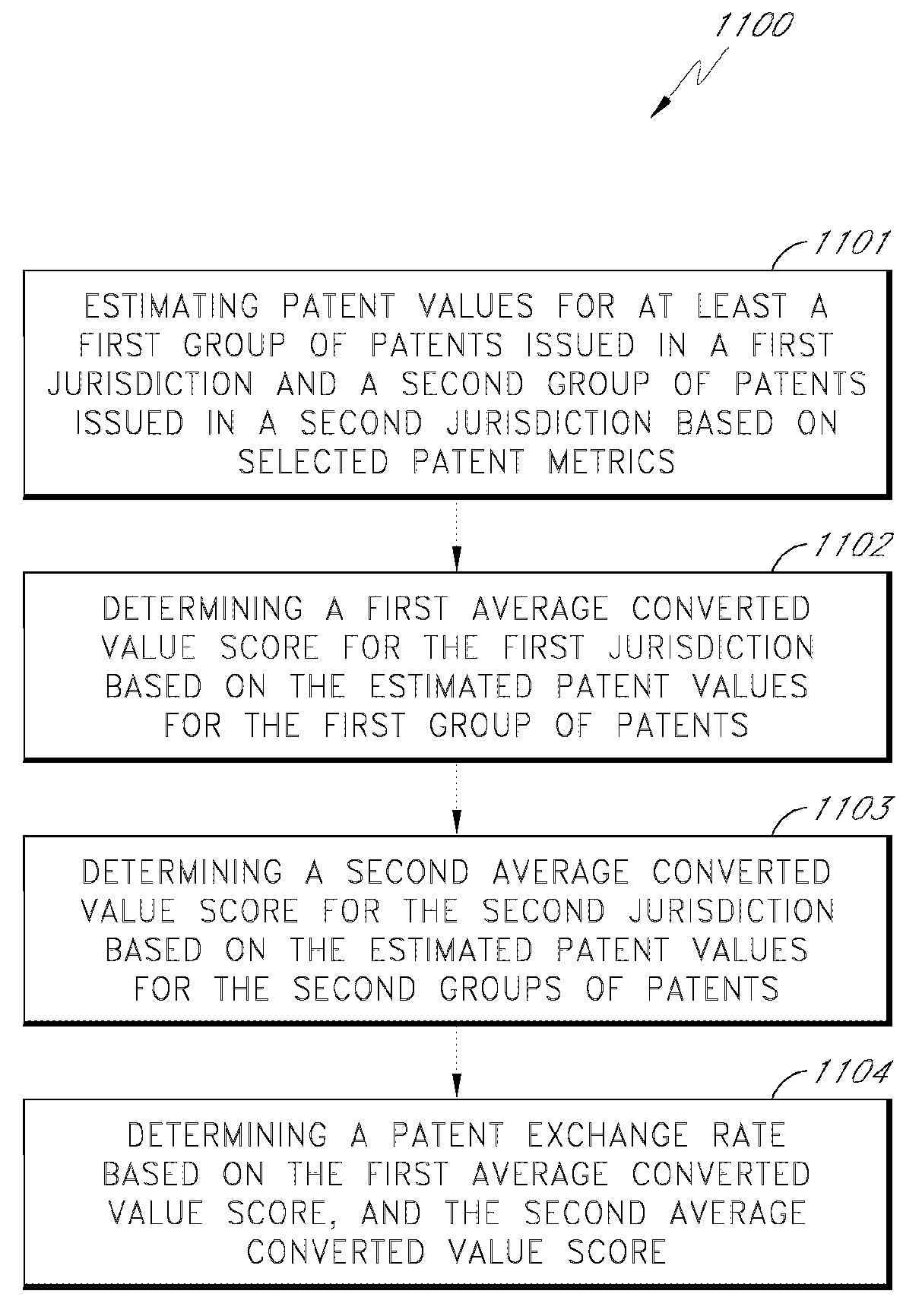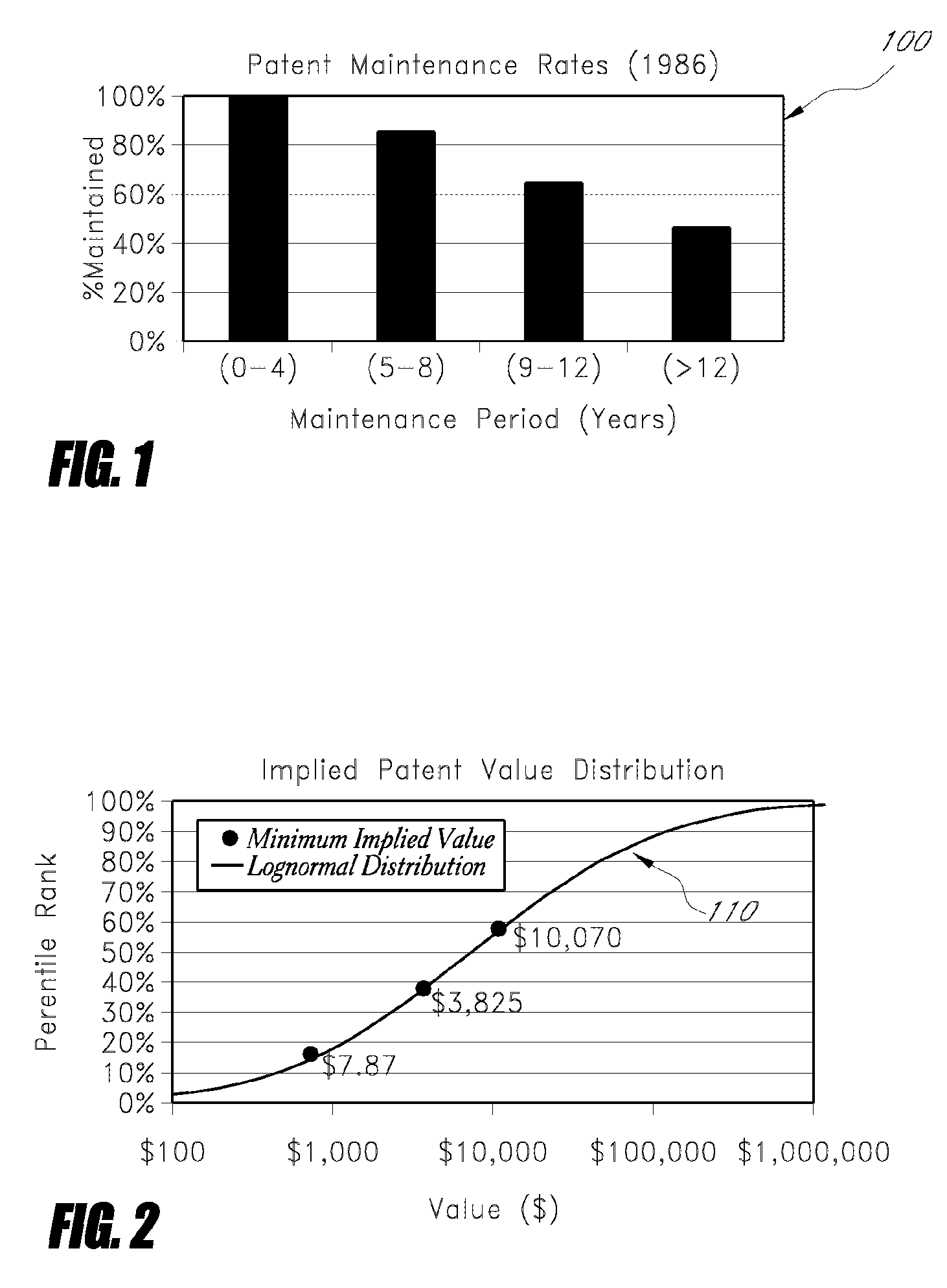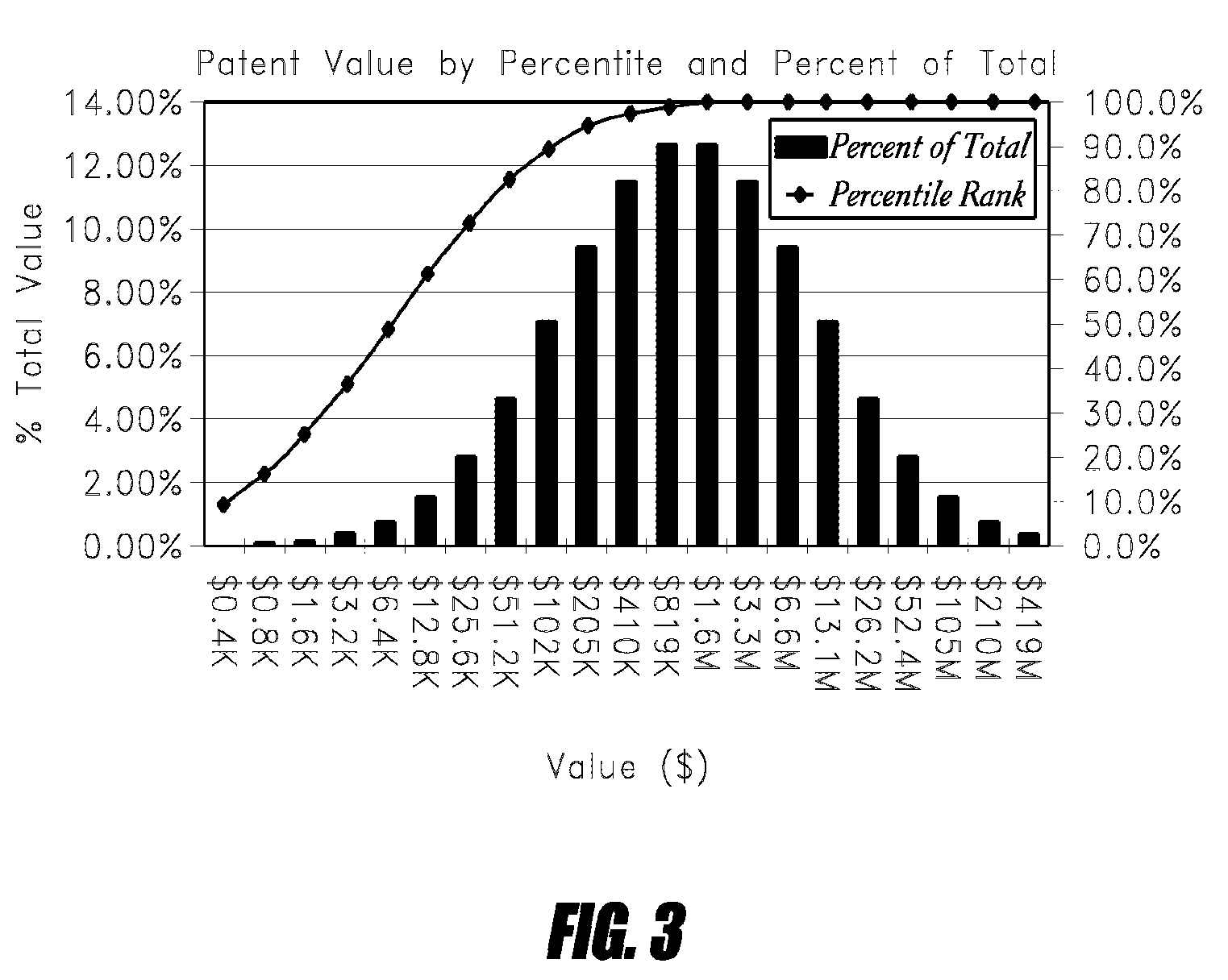Method and system for valuing intangible assets
a technology of intangible assets and valuation methods, applied in the field of asset valuation, can solve the problems of high difficulty in accurate valuation of patents and other intangible intellectual property assets, high cost and additional fees of related professional services, etc., and achieve the effect of adding a level of disciplin
- Summary
- Abstract
- Description
- Claims
- Application Information
AI Technical Summary
Benefits of technology
Problems solved by technology
Method used
Image
Examples
Embodiment Construction
[0050]In the following description, for the purposes of explanation, numerous specific details are set forth in order to provide a thorough understanding of the present invention. It will be evident to one skilled in the art, however, that the exemplary embodiments may be practiced without these specific details. In other instances, structures and device are shown in diagram form in order to facilitate description of the exemplary embodiments.
[0051]Reference will now be made in detail to embodiments of the present invention, examples of which are illustrated in the accompanying drawings. Wherever possible, the same reference numbers will be used throughout the drawings to refer to the same or like parts.
[0052]Owners of U.S. patents are required to pay a periodic tax or “maintenance fee” during the term of a patent if they wish to maintain the patent in force. Maintenance fees are paid every four years and escalate progressively from $850 to maintain a patent in force beyond the four...
PUM
 Login to View More
Login to View More Abstract
Description
Claims
Application Information
 Login to View More
Login to View More - R&D
- Intellectual Property
- Life Sciences
- Materials
- Tech Scout
- Unparalleled Data Quality
- Higher Quality Content
- 60% Fewer Hallucinations
Browse by: Latest US Patents, China's latest patents, Technical Efficacy Thesaurus, Application Domain, Technology Topic, Popular Technical Reports.
© 2025 PatSnap. All rights reserved.Legal|Privacy policy|Modern Slavery Act Transparency Statement|Sitemap|About US| Contact US: help@patsnap.com



